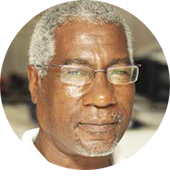
Today is World Health Day – and the most important to be remembered forever by all alive on Planet Earth on this day.
This year’s theme is ‘Building a fairer, healthier world for everyone’ and the sub-theme is ‘Protecting Health from Climate Change.’
According to the United Nations website promoting today, ‘In recent years, countries in the Western Pacific have experienced rapid economic growth, migration and urbanization. This created opportunities for better lives for many, but left others behind. The COVID-19 pandemic has undercut recent health gains, pushed more people into poverty and food insecurity, and amplified gender, social and health inequities.
‘This World Health Day, we’re calling for action to eliminate health inequities, as part of a year-long global campaign to bring people together to build a fairer, healthier world. The campaign highlights WHOs constitutional principle that “the enjoyment of the highest attainable standard of health is one of the fundamental rights of every human being without distinction of race, religion, political belief, economic or social condition.”
Good.
But as far as the majority of the world’s people today are concerned, I would bet their main concern on World Health Day 2021 is about COVID-19 and the effects it has had on the whole wide world in 2020 – and so far in 2021.
Unlike the so-called ‘Spanish Flu’ of 1919 (that actually started in the USA), COVID-19 has taken more lives in less time than the two World Wars (1914-18 and 1939-45) combined and more people than the Korean and Vietnam wars together.
About half of the two million lives taken by COVID-19 by January 2021 (less than a year after it was declared a global pandemic by the World Health Organization (WHO) were in The Americas region — including the USA and Canada, Brazil and Mexico, all of Latin America and The Caribbean, represented by the Pan American health Organization (PAHO).
The 15 member-states of the Caribbean Community (CARICOM) fall within The Americas on the global geopolitical map, as do the 20-something members and associated states of the Organization of East Caribbean States (OECS).
But then size matters.
Altogether, CARICOM’s 15 nations cover 177,000 square miles with a population of just over 18 million, while The Americas comprise 35 nations covering 16.4 million square miles with a population of over 1.03 billion (13.6% of the world’s total) and an annual GDP of $20,971 trillion.
By comparison, CARICOM’s annual GDP is $91,457 million.
The number of deaths globally has climbed since January to over 2.5 million, with the number of daily deaths down on average, but no let-up in the spread of the virus globally, with as many as 100,000 new cases per day in India (yesterday) and 47,000 daily in Brazil (last week).
There’s no immediately available information on the comparative number of deaths in CARICOM since March 18 marked the first year of the pandemic, but it’s nowhere near the rates recorded in the USA and Brazil.
Saint Lucia continues to reel under the unenviable record of having the highest rate of infection within CARICOM and more cases of deaths and a quicker spread-rate than all of the OECS territories combined.
As the island observes World Health Day today, the health authorities are still nervously anxious, praying and hoping they’re not hoping against hope that the four-day Easter religious holiday season — like after 2020 Christmas and New Year 2021 — will not result in a dreaded fourth COVID wave here.
But, be that as it may, there’s no escaping that the COVID-19 scare is even worse in 2021, with at least ten new strands related to SARS-CoV-2: one each in the UK, South Africa and Brazil – and at least seven (so far) in the USA.
The world’s rich nations have the ability to print money and can throw trillions and billions into the COVID battle.
But as many as 190 poor nations, including CARICOM and most of The Americas, have to depend on the WHO’s COVAX mechanism to get needed vaccines – and haven’t been able to get all they needed because the rich countries are buying all out.
With COVID-19 prophesied to last until 2024 at the earliest and CARICOM nations tied tight to the Oxford-AstraZeneca vaccine that’s becoming more and more problematic to deliver on time according to promises to poor nations, affected countries cannot but be concerned that their qualification for assistance is not on the basis of established need.
Climate Change indeed affects Health, but in the present circumstances it will be difficult to get the average Caribbean citizen to place the former on a similar footing as the latter.
The UWI’s COVID-19 Task Force saved thousands of lives by being able to advise CARICOM nations on how to prepare the fightback at least six weeks before the first case was detected in the region.
Not all governments have been following the science and the figures, some starting the fightback much later and paying the deadly cost price in terms of lives and numbers of people being affected.
But rich nations prefer to launch global trade wars against each other over vaccine exports and distribution between themselves, instead of sharing their overstocked piles of vaccines with poor countries and people.
Which is why most CARICOM nations and people are quietly observing today with much apprehension an without a shout — some without even a whisper about COVID-19, as memories of grim worldwide reaping by the invisible virus in 2020 turn into daily nightmares on the Caribbean Street.









